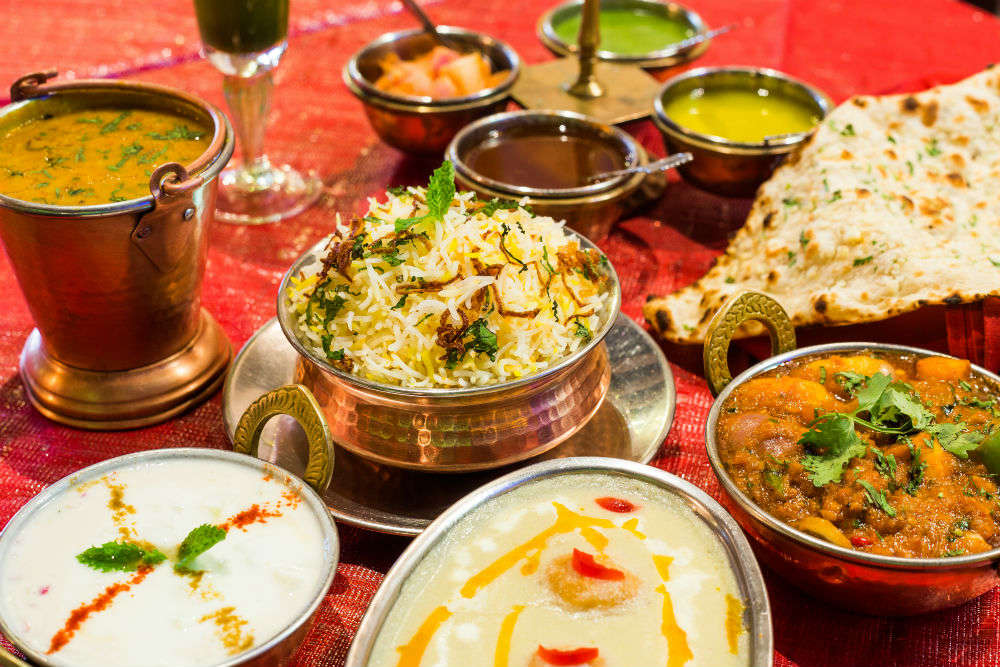Embarking on a Spiced Adventure: Indian Cuisine with Kids Made Easy!
Welcome, parents and guardians! Are you looking to introduce your little ones to the vibrant world of Indian cuisine but feeling a tad overwhelmed? Worry not! You’ve stumbled upon the ultimate parent’s guide to navigating Indian cuisine restaurants with your children. Prepare for a delightful journey filled with flavorful discoveries and joyous family moments.
Understanding Indian Cuisine: A Burst of Flavors!
Indian food is a festival of flavors, with each dish offering a unique blend of spices and ingredients. From mild kormas to fiery vindaloos, there’s a spectrum of tastes to explore. Understanding the basics of Indian cuisine can help you guide your children through this culinary mosaic and make the experience exciting and accessible for them.
Introducing Kids to New Tastes
Exploring new cuisines can be a valuable educational experience for children. It exposes them to different cultures and traditions, and when it comes to Indian food, the variety is as vast as the country itself. Here’s how to get started:
- Start Slow: Begin with milder dishes and familiarize your kids with simple flavors before adventuring into spicier territory.
- Interactive Meals: Many Indian dishes are served family-style, which can be a fun, interactive way for kids to try a little bit of everything.
- Kid-Friendly Choices: Opt for dishes like butter chicken, naan bread, or vegetable samosas, which are generally well-received by young palates.
Choosing the Perfect Indian Restaurant
Selecting the right restaurant is crucial to your family’s dining experience. Here are some pointers to consider:
- Family-Friendly Amenities: Look for restaurants that offer high chairs, kids’ menus, and a welcoming atmosphere for families.
- Menu Research: Check out restaurant menus online in advance to ensure there are options that your children might enjoy.
- Staff Interaction: Don’t hesitate to ask the staff for recommendations; they often know which dishes are hits with the kids!
Teaching Table Manners and Restaurant Etiquette
Going to an Indian restaurant can also be the perfect opportunity to teach your children about dining etiquette in different cultures. Here are some etiquette tips:
- Encourage washing hands before the meal, as traditional Indian dining can involve eating with your hands.
- Teach them to use their right hand for eating and passing food, as this is the common practice in India.
- Explain the importance of waiting until everyone has been served before starting the meal, a sign of respect and patience.
Making it an Educational Experience
Dining out at an Indian restaurant is not just about trying new foods; it’s also a chance to learn about another culture. Turn the outing into a teachable moment:
- Discuss the origins of the dishes and ingredients, as many have fascinating histories and stories behind them.
- Talk about the different regions of India and how the cuisine varies from area to area.
- Encourage your children to notice the decor and music, often carefully selected to represent various aspects of Indian culture.
By embracing these tips and planning ahead, you can ensure that your family’s Indian dining experience will be as smooth as a creamy tikka masala sauce. Remember, it’s all about enjoying new flavors and teaching your children the joy of discovery. So, go ahead, dive into the rich tapestry that is Indian cuisine, and watch your kiddos’ taste buds dance with delight!
Stay tuned for the next installment of our guide, where we’ll delve deeper into kid-approved Indian dishes, discuss customization options for sensitive palates, and provide even more expert advice for creating memorable dining experiences for your family. Happy eating!

Five Essential Tips for Parents Preparing for an Indian Restaurant Visit
When planning a family outing to an Indian restaurant, you might wonder how to make the experience enjoyable for all. Here are five key tips that will help you prepare for a visit that’s sure to be a hit with both the kids and adults!
- Familiarize Yourself with Food Options: Acquaint yourself with common Indian dishes through online resources or cookbooks. By doing this beforehand, you’ll be able to guide your children and perhaps even find a few dishes to try making at home as a fun prelude to eating out.
- Consider Dietary Restrictions and Allergies: If anyone in your family has dietary restrictions or allergies, such as to nuts or dairy, consult the restaurant ahead of time. Many Indian dishes can be rich in nuts, dairy, and wheat. Communicate with the staff to ensure they can accommodate your needs safely.
- Practice Eating with Hands at Home: Since eating with the hands is common in Indian dining, have fun practicing this at home. It’s a natural and enjoyable way for kids to eat, and it will make them feel like pros at the restaurant!
- Balance Adventure with Comfort: Order some adventurous dishes, but also keep some familiar items as fallback options for your children. For example, along with the tandoori chicken, perhaps order a simple daal (lentil dish), which can be less intimidating for a child’s palate.
- Prepare for Spiciness: Talk with your children about the different heat levels in Indian food, and remind them that it’s okay to try a small amount first. You can ask the restaurant to tone down the spice level, or serve spicy sauces on the side, so that the kids can control the amount of heat in their food.
Addressing The Spice Concern: Making Indian Food Kid-Friendly
Indian cuisine is renowned for its use of an array of spices and herbs, which may sometimes be quite hot. However, most restaurants are very accommodating and can adjust the spice level to suit your children’s taste buds. Here are some tactics to help you navigate the spiciness:
- Be proactive in communicating with your server about spice preferences.
- Request that dishes are made ‘mild’ or ask for spices on the side to add to your liking.
- Remember that yogurt-based sides, like raita (a cucumber-yogurt sauce), can cool down a spicy dish.
Dishes Sure to Delight: Kid-Friendly Indian Food
Your tiny taste testers may have different preferences, but some Indian dishes are often more kid-friendly due to their mild flavors and appealing textures. Here are some dishes to consider:
- Biryani: This fragrant rice dish often comes with vegetables, chicken, or lamb. Its colorful presentation and gentle spices are appealing to kids.
- Tandoori Chicken: Grilled, marinated chicken that’s flavorful but not spicy is always a good choice.
- Dosa: These are crispy lentil and rice crepes that can be enjoyed plain or stuffed with a mild potato filling.
- Aloo Paratha: A bread stuffed with spiced potatoes might just become your child’s new favorite comfort food.
- Cheese Naan: Naan bread stuffed with cheese is almost like an Indian take on the grilled cheese sandwich.
Additional Tips for an Enjoyable Family Dining Experience
To wrap things up, here’s a rundown of extra tips that can make your Indian restaurant visit perfect:
- Choose off-peak hours for a quieter, less crowded experience that’s more conducive to a relaxed meal.
- Bring along coloring books or small toys to keep the kids engaged while waiting for the meal.
- Encourage the children to ask questions about the food and share stories about the culture, turning dining out into a live lesson about diversity and history.
With this guide, you should feel fully equipped to venture out and introduce the wonderful flavors of Indian cuisine to your children. The balance of preparation and spontaneity will translate into a fun, educational, and delicious exploration for your family.
For more great articles please see here. For more information see here
Disclaimer
The articles available via our website provide general information only and we strongly urge readers to exercise caution and conduct their own thorough research and fact-checking. The information presented should not be taken as absolute truth, and, to the maximum extent permitted by law, we will not be held liable for any inaccuracies or errors in the content. It is essential for individuals to independently verify and validate the information before making any decisions or taking any actions based on the articles.




